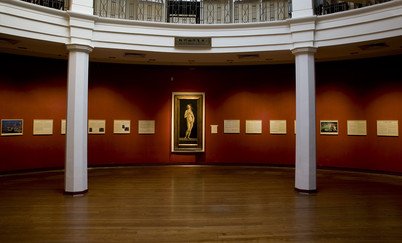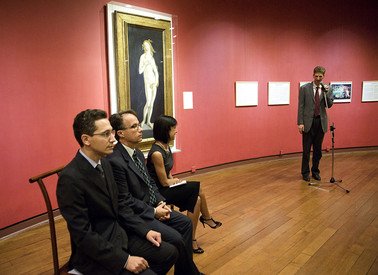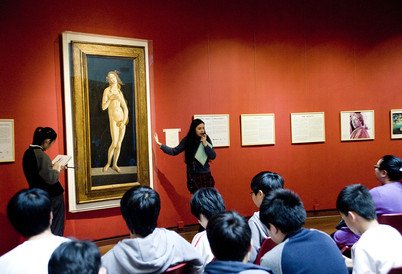Venus in Her Glory at HKU
Opportunity and expertise came together for an exhibition at the University Museum and Art Gallery (UMAG) that introduced young and old alike to the rich and remarkable world of the Renaissance and its art.
Opportunity and expertise came together for an exhibition at the University Museum and Art Gallery (UMAG) that introduced young and old alike to the rich and remarkable world of the Renaissance and its art.
The opportunity came from the Italian Consulate, which contacted HKU last summer to gauge interest in exhibiting an original Botticelli painting of the goddess Venus. It would be the first time that a Renaissance masterpiece of this calibre would be shown in Hong Kong.
The expertise came from the UMAG, which is Hong Kong's oldest museum, and the Department of Fine Arts.
"These paintings are typically classified as national treasures and don't travel much, so we were very excited about this," Dr Florian Knothe, UMAG Director, said. "The Italian Consulate liked to partner with us because we were an educational institution. For us, it meant a chance to reach out to the Hong Kong community and also within the University to involve students in the project."
Dr Knothe and Assistant Professor of Fine Arts, Dr Opher Mansour, worked with four recent graduates to curate an exhibition that not only displayed the Venus painting, but provided a backdrop to the era in which it was created.
Guided tours and texts described the workshop culture, patronage, materials, iconographic values and other factors of the painter's life in 15th Century Europe. There were also explanations about the founding of many institutions, academies and apprenticeships during the Renaissance and other highlights of this long period of peace and prosperity.
Special tours were organised for schools, in particular Form 4 and Form 5 students who are learning about European culture. These were flexible arrangements that catered to the needs of individual classes and also different age groups (the youngest group included five-year-olds).
A total of 38 school groups came to the Museum and Museum staff also visited a couple of schools to make presentations on the Renaissance.
In addition, special evening tours were organised for adult groups complete with refreshments, and about 20 public tours were held for anyone who dropped in. The public could also visit without a tour.
Altogether, about 30,000 people visited the exhibition during October 18 to December 15, 2013, which was the first time UMAG had organised outreach on this scale.
Dr Knothe said the experience had provided a template for organising future programmes. "The feedback has been very good and the experience has encouraged schools to want to repeat this experience," he said. "Our partnership with the Italian Consulate is a remarkable example showing how the University could work with community partners to contribute to art education and promote art appreciation among schools and the general public."




